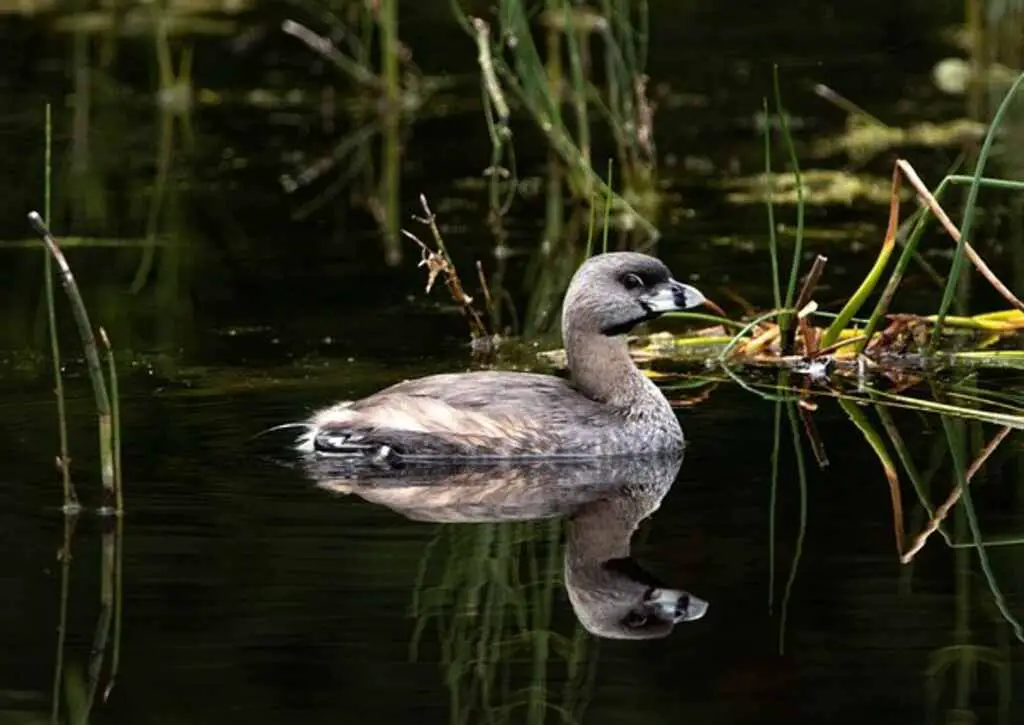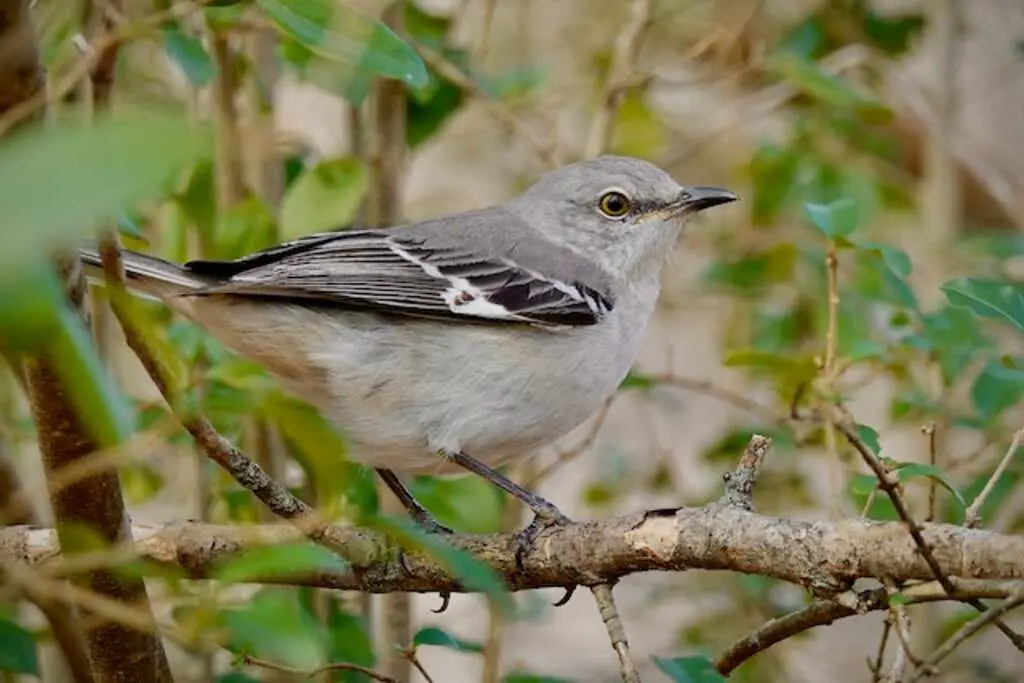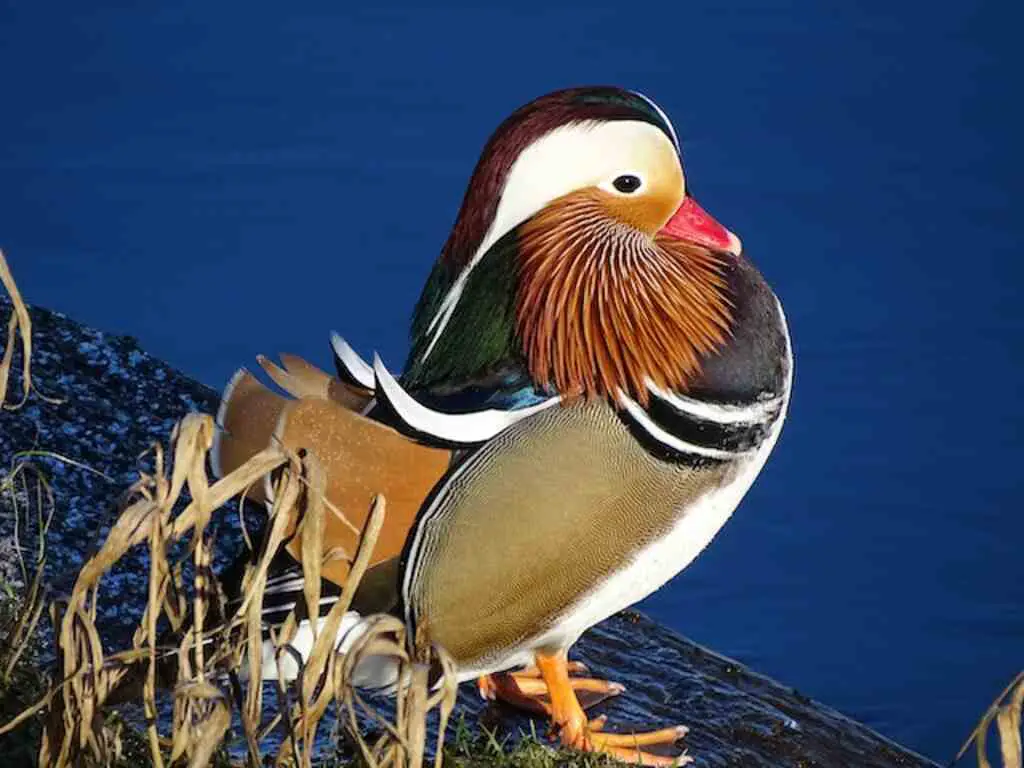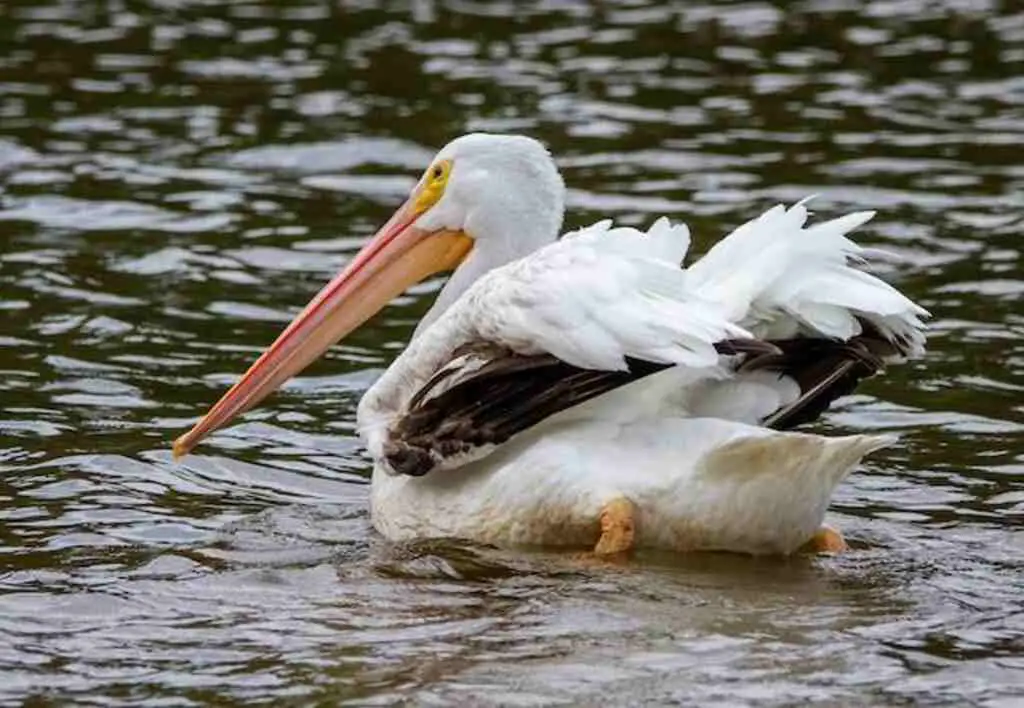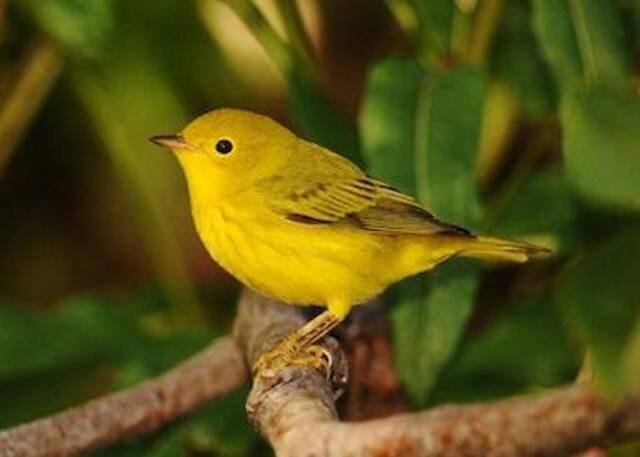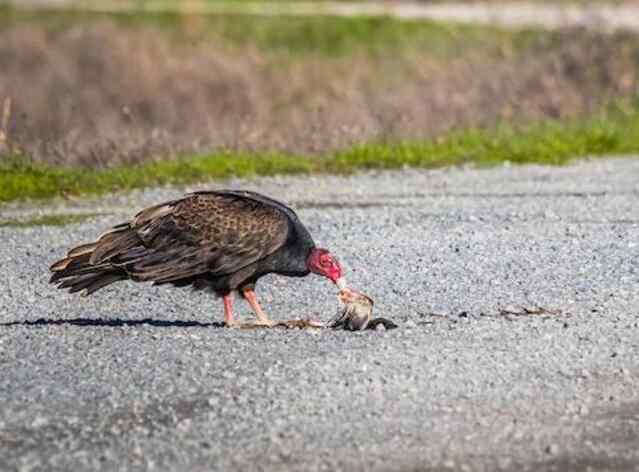If you’re a birdwatching enthusiast, Texas is the place to go for an unforgettable experience. With its diverse range of habitats, the Lone Star state is home to some of the most amazing bird species in the country, making it a premier destination for birdwatchers of all levels.
From the piney woods of East Texas to the Chihuahuan Desert of the west, Texas offers a unique birding adventure. With over 630 species recorded in the state, birdwatchers can expect to see everything from the endangered Attwater’s prairie chicken to the majestic bald eagle.
Table of Contents
- 1 Key Takeaways:
- 2 Top Birdwatching Hotspots In Texas
- 3 Texas Birdwatching Trails and Popular Birding Spots
- 4 Birdwatching in Texas Parks
- 5 Exploring Top Birding Destinations in Texas
- 6 Bird Species in Texas: A Closer Look
- 7 Birdwatching Tips in Texas
- 8 The Importance of Conservation in Texas Birdwatching
- 9 Discovering Texas Birdwatching Events and Festivals
- 10 Planning Your Birdwatching Trip to Texas
- 11 Tips for Photographing Birds in Texas
- 12 Conclusion
- 13 FAQs: Top Birdwatching Hotspots In Texas
- 13.1 What are the top birdwatching hotspots in Texas?
- 13.2 What are some popular birding spots and trails in Texas?
- 13.3 Can I go birdwatching in Texas parks?
- 13.4 What are some top birding destinations in Texas?
- 13.5 What bird species can I expect to see in Texas?
- 13.6 Do you have any tips for birdwatching in Texas?
- 13.7 Why is conservation important in Texas birdwatching?
- 13.8 Are there any birdwatching events or festivals in Texas?
- 13.9 How can I plan a birdwatching trip to Texas?
- 13.10 What tips do you have for photographing birds in Texas?
- 14 Author
Key Takeaways:
- Texas is a top destination for birdwatching enthusiasts.
- The state’s diverse range of habitats is home to a wide variety of bird species.
- Over 630 species have been recorded in Texas, including the endangered Attwater’s prairie chicken and the majestic bald eagle.
Top Birdwatching Hotspots In Texas
Texas is a haven for birdwatchers, with diverse habitats and bird species to explore. Big Bend National Park is a must-visit for its over 450 bird species, while Brazos Bend State Park is a great spot for waterfowl.
Padre Island National Seashore is a prime location for shorebirds, while High Island is a popular stopover for migrant songbirds.
Davis Mountains State Park is a great place to see mountain birds. Whether you’re an experienced birdwatcher or just starting out, Texas’s birdwatching hotspots are sure to provide an unforgettable experience.
Texas Birdwatching Trails and Popular Birding Spots
For avid birdwatchers, Texas offers a plethora of trails and popular birding spots to explore. From coastal wetlands to rocky canyons, the state’s diverse habitats provide a home to numerous bird species, making it a top destination for birdwatching enthusiasts.
Texas Hill Country Trail
The Texas Hill Country Trail is an expansive network of roadways that spans across 19 counties in central Texas. The trail offers birdwatchers a chance to explore the region’s stunning landscapes and diverse wildlife, including a variety of bird species. Keep an eye out for the endangered golden-cheeked warbler or the black-capped vireo, two of the most sought-after birds in the area.
| Location | Top Bird Species |
|---|---|
| Lost Maples State Natural Area | Golden-cheeked Warbler, Black-capped Vireo, Painted Bunting |
| Enchanted Rock State Natural Area | Canyon Wren, Black-chinned Sparrow, Ash-throated Flycatcher |
| Blanco State Park | Green kingfisher, Belted kingfisher, Summer Tanager |
Big Bend National Park
Located in southwestern Texas, Big Bend National Park offers a unique experience for birdwatchers. The park’s varied terrain, including desert, mountains, and canyons, is home to over 450 bird species. Some of the most sought-after birds in the park include owls the Northern Mockingbird, Colima warbler, Mexican jay, and roadrunner.
| Location | Top Bird Species |
|---|---|
| Chisos Basin | Colima Warbler, Black-chinned Sparrow, Mexican Jay |
| Rio Grande Village | Green Kingfisher, Vermilion Flycatcher, Golden-fronted Woodpecker |
| Santa Elena Canyon | Grey Hawk, Zone-tailed Hawk, Peregrine Falcon |
South Padre Island Birding and Nature Center
South Padre Island is a popular destination for beachgoers and birdwatchers alike. The South Padre Island Birding and Nature Center offers a perfect opportunity to spot a variety of bird species, including the spoonbill, egret, and hawk. The center’s elevated boardwalks offer stunning views of the surrounding wetlands and make for an excellent birdwatching experience.
| Location | Top Bird Species |
|---|---|
| South Padre Island Birding and Nature Center | Spoonbill, Egret, Falcon |
| South Padre Island Convention Centre | Roseate Spoonbill, Reddish Egret, White-tailed Kite |
| Laguna Madre Nature Trail | Clapper Rail, Seaside Sparrow, Piping Plover |
Whether you’re a seasoned birdwatcher or just starting, Texas offers a diverse range of birding trails and popular spots to explore. Make sure to plan ahead and bring necessary equipment, such as binoculars and a bird field guide, for the ultimate birdwatching experience.
Birdwatching in Texas Parks
Texas is home to numerous national and state parks that offer birdwatching enthusiasts plenty of opportunities to spot a wide variety of bird species. These parks boast diverse ecosystems, from coastal wetlands to desert landscapes, making them ideal habitats for many bird species.
| Park Name | Location | Key Bird Species |
|---|---|---|
| Big Bend Ranch State Park | Presidio County | Roadrunner, Scaled Quail, Painted Bunting |
| Padre Island National Seashore | Corpus Christi | Piping Plover, Reddish Egret, Roseate Spoonbill |
| Brazos Bend State Park | Needville | Golden-Fronted Woodpecker, Black-Bellied Whistling-Duck, Eastern Bluebird |
These parks offer tours and programs designed specifically for birdwatchers, led by knowledgeable guides who can provide valuable insights into the bird species and their natural habitats. Some of the top parks for birdwatching tours include:
Whether experienced birders or new enthusiasts, visitors can benefit from knowledge about the birds and the specific park seasonality. For example, a prime time for birdwatching in Brazos Bend State Park is during the winter months, when migratory birds reach Texas.
Park websites and visitor centers can provide more information about the timing and location of birdwatching tours as well as useful resources such as maps, checklists, and bird identification guides.
Exploring Top Birding Destinations in Texas
For avid birdwatchers or those seeking a unique outdoor experience in Texas, exploring the top birding destinations in the state is a must. With its diverse range of habitats, Texas is home to an array of bird species that can be found nowhere else in the country.
1. Big Bend National Park
Located in southwest Texas, Big Bend National Park is known for its stunning landscapes and exceptional birdwatching opportunities. The Chisos Mountains, desert landscapes, and the Rio Grande river all offer diverse habitats for bird species such as the Colima Warbler, Varied Bunting, and Vermilion Flycatcher.
| Top Species in Big Bend National Park | Best Time to Visit |
|---|---|
| Colima Warbler | April to September |
| Varied Bunting | May to September |
| Vermilion Flycatcher | Year-round |
2. Padre Island National Seashore
Padre Island National Seashore offers visitors a unique opportunity to see shorebirds and waterbirds in their natural habitats. The park is home to over 380 bird species, including the rarest species in the world, the Kemp’s Ridley Sea Turtle. Shorebirds such as the Piping Plover and Wilson’s Plover, can be spotted on the beach while herons, gulls, and terns can be seen along the shoreline.
| Top Species in Padre Island National Seashore | Best Time to Visit |
|---|---|
| Kemp’s Ridley Sea Turtle | May to July |
| Piping Plover | Year-round |
| Wilson’s Plover | Year-round |
3. High Island
High Island, located on the upper Texas coast, is a popular destination for viewing neotropical migrant birds during the spring and fall migrations. The Smith Oaks Sanctuary, a 143-acre preserve located in the area, offers a variety of habitats that attract bird species such as the Roseate Spoonbill, Black Skimmer, and American Oystercatcher.
| Top Species in High Island | Best Time to Visit |
|---|---|
| Roseate Spoonbill | Year-round |
| Black Skimmer | Year-round |
| American Oystercatcher | Year-round |
These top birding destinations in Texas offer visitors an in-depth look at the diverse bird species and habitats that make the Lone Star State a premier birdwatching destination. By exploring these locations, birdwatchers can experience the beauty of nature and contribute to conservation efforts that protect these incredible creatures.
Bird Species in Texas: A Closer Look
Texas is home to an incredible array of bird species, both resident and migratory. Whether you’re a novice birder or an experienced enthusiast, the state’s many birdwatching hotspots provide ample opportunity to observe and learn about these fascinating creatures.
Here are just a few of the bird species you might encounter on your Texas birdwatching adventure:
| Species | Habitat | Notes |
|---|---|---|
| Eastern Bluebird | Open woodlands and fields | Small, brightly-colored bird with a melodic song |
| Black-bellied Whistling Duck | Wetlands and marshes | Loud, distinctive call; breeds in Texas and Mexico |
| Painted Bunting | Brushy areas and woodlands | Male has striking multicolored plumage; considered a “priority species” by conservationists |
| Crested Caracara | Grasslands and savannas | Large raptor with distinctive crest; many nesting pairs in Texas |
During the fall and spring migration seasons, Texas is teeming with even more bird species as they make their way to and from their breeding grounds. Look for migratory species such as the Yellow Warbler, Wilson’s Warbler, and the Painted Redstart, among others.
Whether you’re exploring the birdwatching trails in Texas’ State Parks or setting out to discover the birding hotspots recommended by local experts, you’re sure to encounter a wide variety of fascinating bird species. Don’t forget to bring your binoculars and field guide, and get ready to experience the beauty and diversity of Texas birdlife.
Birdwatching Tips in Texas
If you’re planning a birdwatching trip to Texas, there are several tips and techniques you should keep in mind to make the most of your experience:
- Research the best time of year to visit: Texas is a year-round birdwatching destination, but some species are more prevalent during certain seasons. Research the migration patterns of the birds you want to see to plan your trip accordingly.
- Bring the right equipment: Make sure to bring binoculars, a field guide, and appropriate clothing and footwear for the climate and terrain. A camera is also recommended to capture memories of your sightings.
- Learn to identify bird calls: Many bird species can be identified by their calls and songs, so it’s helpful to learn these ahead of time. Consider downloading a bird call app to help with identification in the field.
- Join a guided birding tour: If you’re new to birdwatching or unfamiliar with the Texas terrain, consider joining a guided birding tour. These tours are led by experienced birders who can help you spot and identify birds.
- Respect the birds: While birdwatching, it’s important to keep a safe distance from the birds to avoid disturbing them. Avoid making loud noises or sudden movements that could startle them.
- Stay aware of the weather: Texas weather can be unpredictable, so it’s important to stay aware of weather conditions and be prepared for sudden changes in temperature or precipitation.
- Observe birding etiquette: When birdwatching in groups or in public areas, it’s important to be respectful of other birders and individuals using the same space. Use quiet voices, avoid blocking trails or paths, and be courteous to ensure a positive experience for everyone.
The Importance of Conservation in Texas Birdwatching
Texas has a rich avian population, with over 600 species of birds calling the state home. However, many of these species are under threat due to habitat loss, climate change, and other environmental factors. It is crucial that birdwatchers take an active role in supporting conservation efforts to protect these precious birds for future generations.
The Impact of Habitat Preservation
Habitat preservation is a key component of bird conservation, as it ensures that birds have access to the food, shelter, and breeding grounds they need to survive. Birdwatchers can support habitat preservation efforts by volunteering with local conservation organizations, learning about habitat restoration techniques, and advocating for policies that protect natural habitats.
Bird Banding Programs
Bird banding programs allow scientists to track the movements of bird populations and monitor their health over time. Birdwatchers can support bird banding programs by reporting sightings of banded birds, volunteering to assist with banding efforts, and donating to organizations that conduct banding research.
Citizen Science Initiatives
Citizen science initiatives engage everyday people in scientific research and data collection. Birdwatchers can participate in citizen science programs by submitting their observations to online databases, assisting with bird counts and surveys, and contributing to research projects aimed at understanding bird populations and behaviors.
By supporting conservation efforts in Texas, birdwatchers can help preserve the state’s unique bird populations and ensure that future generations can continue to enjoy the beauty and diversity of Texas birds.
Discovering Texas Birdwatching Events and Festivals
Birdwatching events and festivals are an excellent way to connect with other birdwatchers and learn from experts in the field. In Texas, there are many opportunities throughout the year to participate in these exciting gatherings.
One of the most popular events is the Rio Grande Valley Birding Festival, held annually in November. This festival is known for its diverse bird species and offers various guided birdwalks, workshops, and presentations.
The Great Texas Birding Classic is another event that draws birdwatchers from around the world. This tournament-style competition features various categories and encourages participants to explore different birding locations and record their sightings.
The Texas Ornithological Society also hosts several events throughout the year, including the Texas Bird Records Committee meetings and the annual meeting with field trips, seminars, and keynote speakers.
Additionally, many Texas state parks and wildlife refuges hold birdwatching events and programs, such as bird banding demonstrations and bird identification workshops.
Participating in a birdwatching event or festival is an excellent way to enhance your birdwatching experience in Texas and connect with other enthusiasts who share your passion for the avian world.
Planning Your Birdwatching Trip to Texas
Planning a birdwatching trip to Texas can be an exciting and rewarding experience. To ensure a successful trip, there are several factors to consider.
Transportation and Accommodation
First, consider how you will be traveling to Texas and how you will get around once you arrive. Many major cities in Texas have airports with both domestic and international flights. For travel within Texas, renting a car is recommended as it provides the most flexibility.
For accommodation, there are a variety of options available including hotels, motels, bed and breakfasts, and camping sites. It’s important to book accommodation in advance, particularly during peak birdwatching seasons.
Birdwatching Permits and Licenses
Before embarking on your birdwatching adventure, it’s important to check if any permits or licenses are required for the specific location you plan to visit. Some parks or wildlife refuges may require permits for birdwatching activities, while others may have restrictions on the use of certain equipment.
Weather and Timing
Weather and timing are important factors to consider when planning a birdwatching trip to Texas. Texas has a diverse climate, so it’s important to research the weather conditions for the specific regions you plan to visit and pack accordingly.
Additionally, certain bird species may only be present during specific times of the year, so it’s important to plan your trip accordingly to maximize your chances of spotting the birds you want to see.
Resources for Planning Your Trip
There are several resources available to help plan your birdwatching trip to Texas. The Texas Parks and Wildlife Department website provides information on parks, wildlife refuges, and wildlife management areas throughout Texas.
Local birdwatching clubs and organizations can also provide valuable insights and recommendations for birdwatching locations, accommodations, and other tips to enhance your trip.
Tips for Photographing Birds in Texas
Photographing birds in their natural habitats can be a rewarding experience, but it requires patience and skill. Here are some tips to help you capture stunning bird photos during your Texas birdwatching adventure:
- Invest in a quality camera: A camera with a fast autofocus and a long lens is ideal for capturing birds in motion.
- Observe bird behavior: Take time to observe the behavior of the birds you want to photograph. This will help you anticipate their movements and capture more natural shots.
- Use a tripod: A tripod will stabilize your camera and reduce motion blur, allowing you to capture sharper images.
- Focus on the eyes: The eyes of a bird are the most striking feature. Make sure they are in focus for a more impactful photo.
- Consider lighting: The best time to photograph birds is during the golden hours of sunrise and sunset, when the light is warm and soft. However, be mindful of harsh shadows and direct sunlight when shooting during midday.
- Get low: Shooting from a lower angle can add depth and interest to your photos, especially when capturing birds in flight.
- Practice patience: Bird photography requires patience, so be prepared to wait for the right moment to capture that perfect shot.
Remember, always prioritize the safety and well-being of the birds when photographing them. Do not disrupt their natural behavior or habitat for the sake of a photo. With these tips in mind, you’ll be well on your way to taking stunning bird photos during your Texas birdwatching trip.
Conclusion
As one of the most biodiverse states in the U.S., Texas offers birdwatchers a multitude of opportunities to explore its varied habitats and encounter an incredible range of bird species. From the top birdwatching hotspots to parks, trails, and specific destinations, Texas is a birdwatcher’s paradise.
Whether you’re a beginner or an experienced birdwatcher, there are many events, festivals, and tours available to enhance your experience and engage with other enthusiasts.
Conservation efforts are also critical to ensure the preservation of these magnificent birds, and birdwatchers can play an important role in contributing to these efforts.
Planning your trip to Texas can be facilitated by utilizing available resources and permits, arranging accommodation and transportation, and following birdwatching tips to make the most of your experience.
Don’t forget to bring your camera to capture stunning images of the bird species you encounter while birdwatching in Texas. With patience, the right equipment, and a keen eye, you are sure to capture beautiful photos of these amazing birds in their natural habitats.
FAQs: Top Birdwatching Hotspots In Texas
What are the top birdwatching hotspots in Texas?
Texas is home to several top birdwatching hotspots, including the Corpus Christi area, the Rio Grande Valley, and the Hill Country region. These areas offer diverse habitats and a wide range of bird species to observe.
What are some popular birding spots and trails in Texas?
Texas boasts a variety of popular birding spots and trails, such as the Big Bend National Park, the Aransas National Wildlife Refuge, and the High Island Bird Sanctuary. These locations provide unique birdwatching opportunities and stunning natural environments.
Can I go birdwatching in Texas parks?
Yes, there are several Texas parks known for their birdwatching activities. Some notable parks include the Brazos Bend State Park, the Davis Mountains State Park, and the Choke Canyon State Park. These parks offer beautiful scenery and ample birdwatching opportunities.
What are some top birding destinations in Texas?
Texas offers a range of top birding destinations, such as the Lower Rio Grande Valley, the Texas Coast, and the Big Thicket National Preserve. These areas attract birdwatchers from around the world and offer unique bird species and ecosystems.
What bird species can I expect to see in Texas?
Texas is home to a wide variety of bird species, including the colorful Painted Bunting, the majestic Bald Eagle, and the elusive Golden-cheeked Warbler. The state’s diverse habitats attract a rich avian population throughout the year.
Do you have any tips for birdwatching in Texas?
Absolutely! When birdwatching in Texas, it’s essential to visit during peak migration periods, bring binoculars and a field guide, and stay patient and observant. Additionally, familiarize yourself with the unique characteristics and behaviors of the bird species you hope to spot.
Why is conservation important in Texas birdwatching?
Conservation efforts are crucial for protecting the habitats and bird species in Texas. By supporting habitat preservation and participating in bird banding programs and citizen science initiatives, birdwatchers can contribute to the long-term conservation of these magnificent creatures.
Are there any birdwatching events or festivals in Texas?
Yes, Texas hosts various birdwatching events and festivals throughout the year. These events offer opportunities for guided birdwalks, educational workshops, and engaging with fellow birdwatching enthusiasts. Examples include the Rio Grande Valley Birding Festival and the Texas Birding Classic.
How can I plan a birdwatching trip to Texas?
When planning a birdwatching trip to Texas, it’s important to consider transportation options, research accommodation near birding hotspots, and obtain any necessary permits or licenses. Utilizing online resources and guidebooks can help ensure a successful trip.
What tips do you have for photographing birds in Texas?
When photographing birds in Texas, it’s helpful to have a telephoto lens, study bird behavior to anticipate shots, and practice patience. Pay attention to composition and lighting to capture stunning images of the diverse bird species found in the state.

